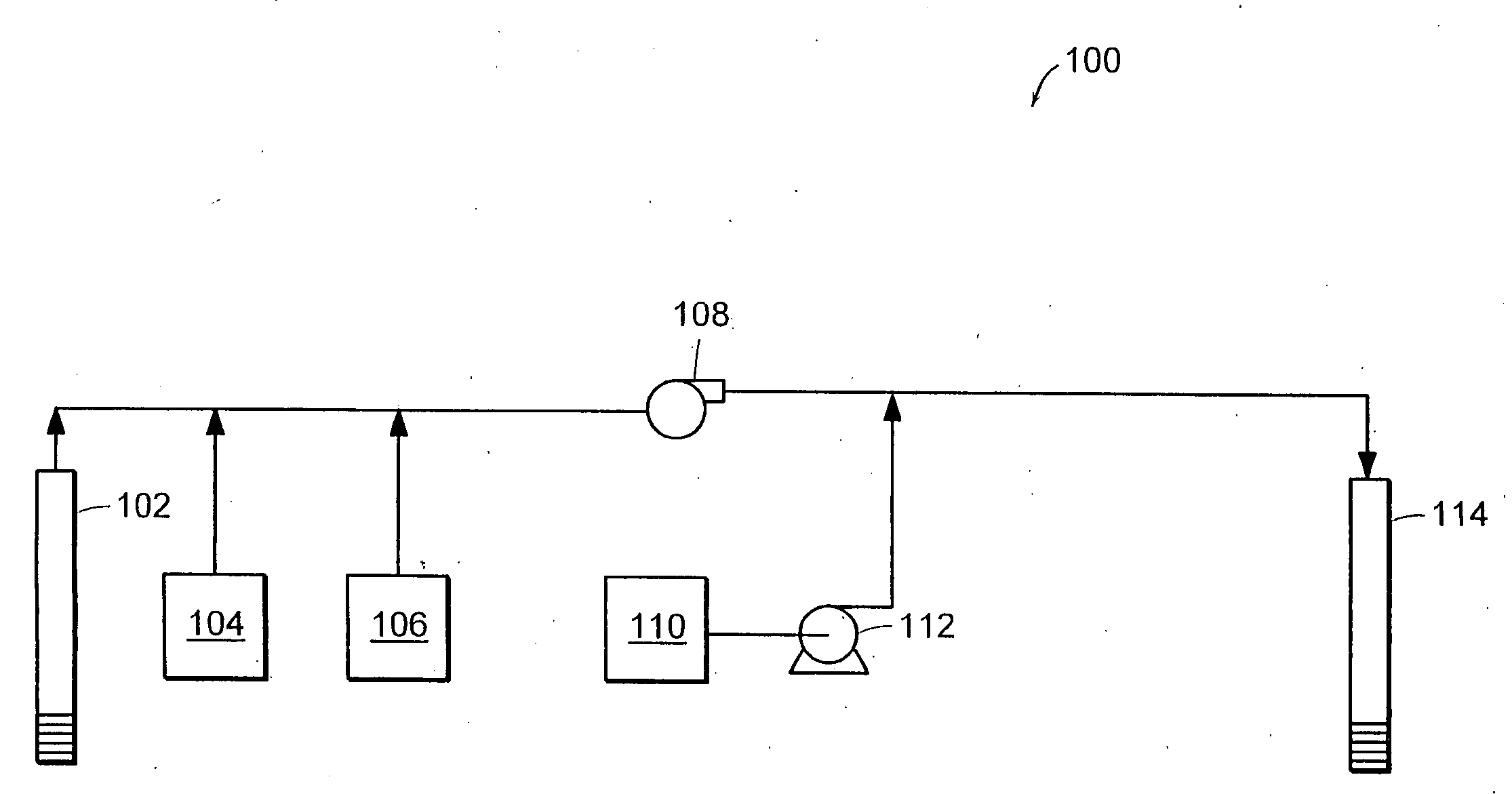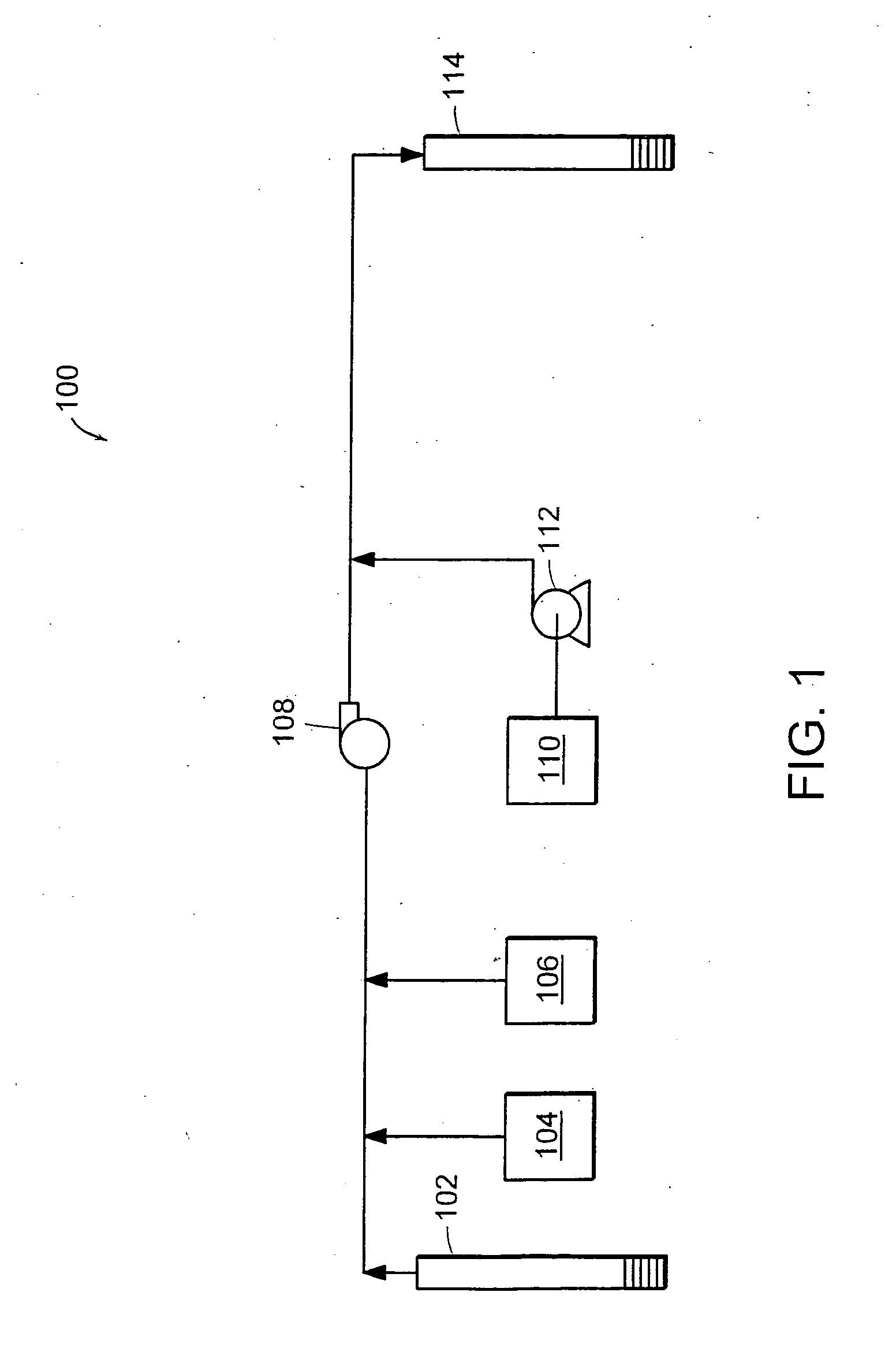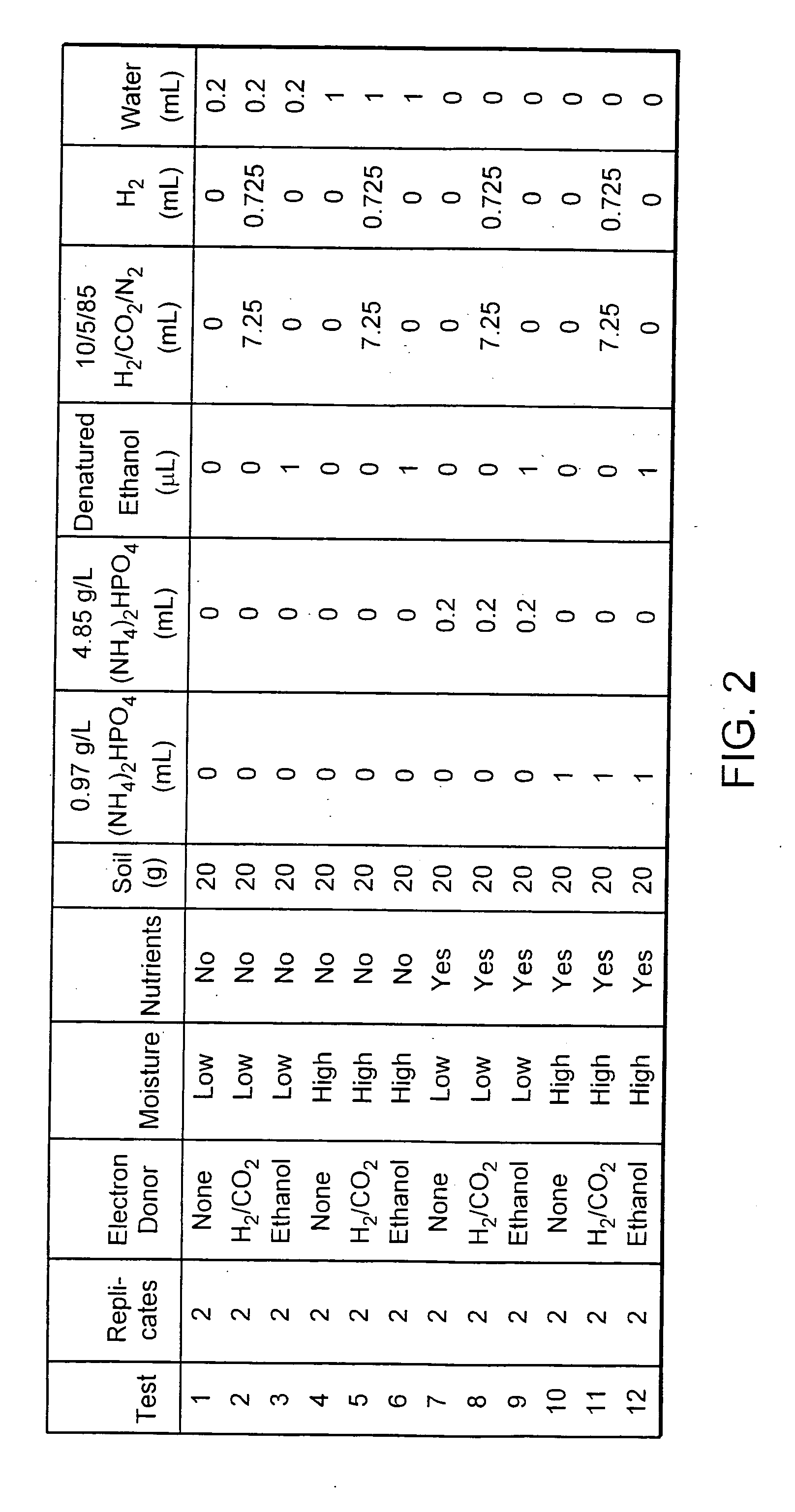Process for in situ bioremediation of subsurface contaminants
- Summary
- Abstract
- Description
- Claims
- Application Information
AI Technical Summary
Benefits of technology
Problems solved by technology
Method used
Image
Examples
examples
[0078] Samples were collected from a known contamination site in California. Simulated gas phase in situ biodegradation tests were conducted in 26-milliliter (mL) anaerobic pressure tubes sealed with thick butyl rubber stoppers and aluminum crimp seals. Soil was added to the tubes and they were then flushed with nitrogen to remove oxygen from the headspace. Amendments were then added to the tubes which were then incubated at room temperature in the dark.
[0079] Twelve test conditions were set up and each was prepared in duplicate. FIG. 2 illustrates a table summarizing the twelve test conditions. The experimental design was that of a factorial experiment involving three factors each at two or three levels. The three factors and their associated levels were electron donor (none, hydrogen, or ethanol), moisture (low or high), nutrients (none or added). Carbon dioxide was added in addition to hydrogen as a source of carbon for growth.
[0080] Carbon dioxide and hydrogen were initially a...
PUM
 Login to View More
Login to View More Abstract
Description
Claims
Application Information
 Login to View More
Login to View More - R&D
- Intellectual Property
- Life Sciences
- Materials
- Tech Scout
- Unparalleled Data Quality
- Higher Quality Content
- 60% Fewer Hallucinations
Browse by: Latest US Patents, China's latest patents, Technical Efficacy Thesaurus, Application Domain, Technology Topic, Popular Technical Reports.
© 2025 PatSnap. All rights reserved.Legal|Privacy policy|Modern Slavery Act Transparency Statement|Sitemap|About US| Contact US: help@patsnap.com



